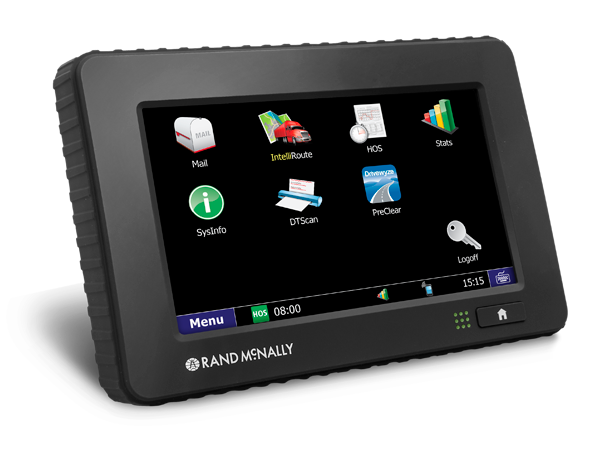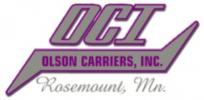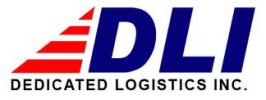Electronic Logging Device Update
Submitted by Bill on
FMCSA's DeLorenzo: Upcoming "messy" period for ELD use
Head of agency's Compliance and Enforcement Office notes various systems, methods will be in use, offers insight
Feb 3, 2016Aaron Marsh | Fleet Owner
DALLAS. Attendees of the Omnitracs Outlook 2016 user conference got a chance Tuesday morning, Feb. 2 to hear from the Federal Motor Carrier Safety Administration (FMCSA) about electronic logging devices, or ELDs, and changes they'll require. Expect a somewhat "messy" period while multiple forms of compliance with hours of service requirements are allowed, noted Joe DeLorenzo, director of FMCSA's Office of Compliance and Enforcement.
A first relevant date in the compliance timeline for ELDs is just around the corner, he said. As of Feb. 16, two months after the ELD final rule's publication date in the Federal Register, manufacturers will be able to register and self-certify their ELD products.
"We're going to publish our compliance test procedure so that folks can see that," he told the audience. "The registration website will go up, so everybody can see what devices are registered. Law enforcement officers will be able to go check. So sometime after Feb. 16, we'll have the first ELDs out there — manufacturers can certify them, and folks will be able to use them."
Most commercial drivers will need to be using ELDs by Dec. 16, 2017, two years following the rule's publication. Fleets and trucking companies that are using devices compatible with older automatic onboard recording device, or AOBRD, standards have another two years beyond that through Dec. 16, 2019 to have ELD-compliant devices in trucks.
That's essentially going to result in a mishmash of ways to comply with hours of service regs for drivers for a time, he explained. "We'll have all the ways you can comply with hours of service requirements — you can have paper logs, or you could have some sort of electronic version of recording paper logs. AOBRDs will still be around for awhile, and they actually could be around for some [carriers] for the whole four-year period.
"And on top of that, we're going to have the newly-certified ELDs out there," he noted. "As you're transitioning and everybody else is transitioning, make sure your drivers understand what technology they have — exactly what it is and exactly how it works is going to be super important."
Things will even out as ELDs make their way into the fold, he predicted, adding that he expects many fleets will get ELD-compliant devices sooner than the specified deadlines.
"There's a lot of people talking about the road ahead and change — it's a time of transformation in the industry," DeLorenzo said.
He went on to list a number of things motor carriers should be aware of regarding ELDs and all the accompanying compliance requirements, offering some insight into FMCSA's thinking.
1. Enforcement officers are transitioning, too.
"As you, your drivers, your dispatchers and everyone are getting ready to switch from a paper-based system or from a system of different types of devices with different functionalities to this consistent standard of the electronic logging device, the same thing is happening with enforcement," DeLorenzo said.
"Enforcement officers at the side of the road are used to walking up to your drivers and saying, 'Hand me your trip packet and your logs, driver's license/medical, all your paperwork' and going back and figuring out what the hours of service compliance was.
"This is all changing for them, too."
2. Know what the ELD rule does and doesn't do.
The point of the ELD rule is to increase compliance with hours of service requirements, DeLorenzo noted, to increase safety of drivers and trucks on the road. "That's really what we're all about. But you have to understand what the rule does and doesn't do," he added.
"It creates this electronic logging device and a few other things, but it doesn't change any of the rules relating to hours of service. The most frequent questions I've got so far have been about hours of service, but none of that has changed," he told listeners. Rather, ELDs are just a different means of recording driver logs.
3. Use the transition period to do some homework.
Motor carriers are primarily focused on getting away from paper records of duty service and moving toward ELDs, DeLorenzo said. "But this is really about transition, and transition in operations — transition in how everybody works on this issue together.
"There are a few exceptions to the rule, but for the most part, drivers who are required to have logs are going to be required to have an ELD," he continued, touching on one of those: the ELD rule's 8/30 day provisions. "If you need to use a [driver] log more than 8 days in any 30-day period, you have to have an electronic logging device. The idea was we didn't want to 'rope in' a lot of short-haul drivers that occasionally make day trips," he said.
But the point isn't to stumble into things and suddenly find your drivers will need an ELD. "It's going to take some planning; it's going to take some thought. It's going to take some time to figure out your operations, who needs to have what technology.
"The transition period is really important in terms of identifying how your operation is going to work and being sure you make compliance as easy on yourself as possible."
4. Better driver training/knowledge will mean smoother roadside inspections.
DeLorenzo pointed out that the ELD rule specifies various technical requirements, and understanding ELD types — and the particular ELD device a carrier chooses — could spell the difference in roadside hassles for drivers or a smoother time working with enforcement officers.
He explained that there are different kinds of allowable ELD devices, including devices that will work via email and web services or devices that only work locally in a truck and connect via Bluetooth and USB, with driver logs periodically offloaded from the devices.
That means states' law enforcement officers also will be working with the variety of options to connect with devices and access driver logs, and one state may look to have officers use email while another chooses web services for the devices that have those connectivity options.
"It's going to be really important that your drivers be familiar with both options and how they work," he said. "The better the level of knowledge your driver has, the more that he or she knows about that device and how it works, the faster the roadside inspection will go."
5. Law enforcement may default to printout/display option to access log info.
Relating to that last point, all ELDs are required to have either a printout capability or display that can he passed to an enforcement officer as an option in case other connectivity methods fail. DeLorenzo advised audience members to expect that officers will likely default to that method.
"As we're transitioning, I think what we're going to see — especially over the next year or so — is that that printout or display is going to be the default way for law enforcement to check hours of service, once we have ELDs certified and out there," he said.
The reason for that is law enforcement also will be transitioning to working with ELDs, and there's bound to be a learning curve; the simplest method to get driver logs is likely to win out.
"Most law enforcement is going to be looking at the printout or display. Some may accept another method like email or something like that, but I wouldn't count on that because that's going to be at their discretion," DeLorenzo said. "There's a lot going on out there, so the easier as you can make it, the better off you'll be."
6. Understand how ELD logs can be edited.
At the end of the day, an ELD is intended to be the record for drivers, according to DeLorenzo, and the final rule is written to give drivers some ownership in that regard. "Ultimately, this is really the driver's record. Any changes anybody makes to the logs are going to have to be approved by the driver," he noted.
"There's a lot of folks who think this will make a lot of compliance issues go away, but it also can create another set of issues if the logs and electronic parts of this are not handled properly in terms of recording hours of service," he added.
7. Know about anti-driver harassment provisions with ELDs.
Noting this may be "a touchy subject" where drivers and carriers have different views, DeLorenzo spent some time going over anti-driver harassment provisions of the final rule and how they relate to anti-driver coercion regulations now in effect.
"The idea is that using the technology to cause an hours of service violation is not what we want to have at the same time we're trying to improve compliance and safety," he explained.
The driver harassment and coercion rules are "two different things, but they are related," DeLorenzo said. Anti-driver harassment elements of the ELD rule will have to be something related to using an ELD and hours of service. In a nutshell, this will be some action on the part of a motor carrier that results in a violation of the driver's hours of service requirements.
"If I want to boil this down to something simple, once I have an ELD, I can't use it to cause my driver to violate the hours of service requirements," he said. Carriers in such an instance would face an hours of service as well as a harassment violation, "kind of a double-whammy."
Driver coercion, however, is broader, and involves taking some action against a driver if he or she refuses to operate in violation of hours of service regulations. Coercion "could come from somebody external to your company — it could be a transportation intermediary, shipper or whatever the case happens to be," DeLorenzo noted. "If there's some sort of threat of withholding work or something like that for not violating the regulations, then you've got a coercion issue.
"The other thing about coercion is it applies to all the regulations, not just hours of service," he continued.
If a driver feels that he or she has been either harassed or coerced, the driver can file a complaint, including through an online filing system FMCSA has available. But DeLorenzo said carriers shouldn't panic just because a driver files a complaint.
"I get the difficulty with these complaints. Just because somebody files a complaint doesn't mean there's going to be some kind of major issue; it does mean we're going to investigate it," DeLorenzo said. "But everybody gets a chance to tell their side of the story."
8. Be aware of documentation requirements — and keeping "bookends."
"We talk about supporting documents in the rule, and this is really important for those of you who would get a visit from one of our investigators for some reason," DeLorenzo said. He noted that the ELD rule "actually simplifies what you're required to keep in terms of documents" by limiting the number of documents a carrier must keep to eight and categorizing the types of documentation.
Carriers may be keeping documentation for reasons other than supporting ELDs, he pointed out, such as for fuel taxes. But as far as ELDs are concerned, carriers should be sure to focus on bookending the start and finish of a driver's duty time.
"The most important thing is you don't have to keep more than eight [documents for any 24-hour period], but you do have to keep 'bookends' to show the earliest in the duty day and the end of the duty day to help establish the driver's hours of service," DeLorenzo summed it up.
More Recent News Stories








